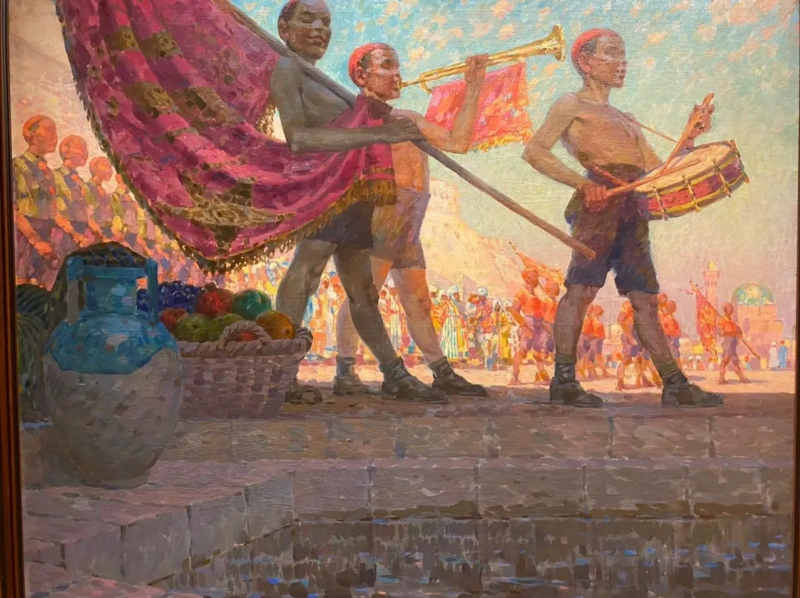One of the founders of the OST. In 1914-17 he studied at the Stroganov art-industrial school, 1918-20 – at the State free art workshops in A. Sarychev, V. Kandinsky, Vladimir Tatlin, in 1920-24 – at the higher art school under D. Shterenberg. In the early 1920s did the counter-reliefs and abstract compositions under the influence of Malevich and Kandinsky. Issued a number of plays, including "Stenka Razin" V. Kamensky (1923-24, the Theatre of revolution, Moscow).
In 1925-28 – member of the OST. In the 1920s and 30s worked on movie posters, and designed books. In the mid-1930s, he worked as a marine painter. In 1933-40 was designed the all-Union agricultural exhibition. In 1941-42 established a series of military posters for "Window TASS". The artist's works were exhibited at international exhibitions in Paris (1925), Berlin (1927, 1928), Venice (1932), new York (1933), London (1934).
Works are in state Tretyakov gallery, state Russian Museum and other Museum collections.
In 1918-1925 vyalov studied at the Moscow VKhUTEMAS, visited the workshops of the leading artists of the Russian avant - garde A. Sarychev, V. Tatlin, P. Bromirsky, A. Lentulov, V. Kandinsky, and D. Shterenberg. In VKhUTEMAS vyalov met with the plastic ideas of the masters of the avant-garde. Based on these ideas, he was inventing a new art form - he created concave reliefs, abstract composition, was fascinated by ideas about the relationship of music and painting, seeking to apply his findings not only in easel paintings, but more from his point of view, socially important kinds of art: theatre design, magazine and book graphics, poster. As a painter vyalov was an established member in 1924 of the society of easel artists (OST). The society included such great masters as A. Deineka, Y. Pimenov, P. William, A. Labas, A. Tyshler, A. Goncharov. The main goal of these artists was to create paintings on a contemporary theme in the new language, the rejection of the literary narrative. Created by Valovym in the 1920s: "the Policeman" (1923), "Radio", "Motor run" (1923-1925), "Water start", "Ping-pong" (both - 1927), "Cinema Eisenstein on shooting" (1927-1928), "the Kronstadt roads" (1928) original not only in the story, but also the manner of the image, interpreted by the author as a "mounting sense" and expressive splavlyaya together the experience of a poster of the revolutionary years with its laconic "telegraphic" language, street art, planar conditionality and canvas paintings, rendered as masterfully made art items.
In the first half of the 1930s vyalov traveled extensively in the USSR, fascinated by the scope of restructuring the country from a peasant to an industrial one. He visited the Urals, the Crimea, Dagestan and Turkmenistan, which has led to the emergence of such works as "the Crimean resort" (1932), "Turkmenistan" (1934), "Divers in the sea" (1936), "the Skydivers" (1938). Romantic at heart, the artist hasn't changed the dreams and hopes of its youth, continuing to the end of writing life-affirming works ("Rafting", 1956; "Soviet icebreaker Krasin Saves the Italian exideuil at the North pole in 1928", 1956; "gunboat", 1963), a beautiful "home" landscapes and still lifes ("the sea", 1960; "the siren", 1963; "Phloxes", 1964). Picture vyalov stored in the state Tretyakov gallery, in many public and private collections of Russia and some foreign countries.
Literature:
Konstantin Vyalov. Booklet. M.,1968.
Konstantin Vyalov. Directory. M.,1981.
- Artworks in 2 collections and 3 selections




